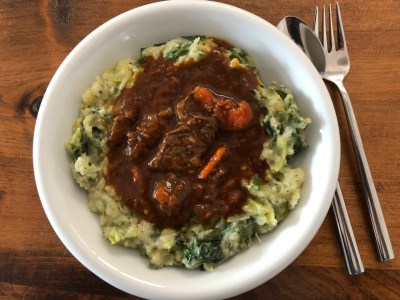
Written by Steve Body
Fruit…in beer?
Well…okay. I guess.
After literal generations of beer being grains, yeast, hops, and relentless marketing, beer suddenly evolved a BIG Difference – FLAVORS. LOTS of flavors, of all kinds: flowers, spices, bread, cookies, infusions galore, chocolate, licorice…BIG flavors. This difference – derived at first by clever use of grains and very different yeasts and the relative handful of hops variations that existed when craft beer started to Boom – became the hallmark of that alternative school of brewing.
BUT…as with the Big IBU Scare of the early 00s, things like this escalate. We are Americans, after all, and for us Bigger Is Better. Nothing Is Too Much. And very little is ever Enough. Soon, those original fruity beers without infusions didn’t satisfy the craving for fruity beers. As clever people will, clever people began to experiment with ways to shovel up more fruit(ish) flavors – mainly citrus but also various melons, berries, flowers, nuts, anything, really, all of it kinda centered upon the juice boxes on which the new waves of people reaching drinking age were raised. “Tropical” became a core idea. Pineapple, guava, mango, papaya, lychi, citrus, and on and on. Even the exotic mangosteen and dragon fruit have had cameos in the Beer Fruit Thang. Coconut, produced by some newish hops, sticks its knobby little head up, pretty frequently. And, of course, this doesn’t even include the breweries which reasoned, correctly, that you could just, like, dump actual stuff into the tanks and induce whatever the hell flavors you want, without having to wrestle with those complicated ol’ hops and yeasts.
Want to read more? Please click… HERE!!!








 The Bavarian Brewing Co., Inc., was once the largest brewer in the state of Kentucky and the largest employer in Covington, KY. Out of dozens of breweries that operated during the 19th and 20th centuries in the Cincinnati area, it’s the only one with a remaining structure that was used for former Brew and Mill Houses. This edifice is visible and easily accessible off I-75 at the 12th Street Exit in Covington. (See a location map to visit.) It was formerly Brew Works and Jillian’s, and was re-purposed in 2019 for office use as the Kenton County Government Center. There is also a Bavarian Brewery Exhibit that explores the history of the brewery and it buildings, accompanied with artifacts and Breweriana items on display. A Riedlin – Schott Room (named after the families who owned and operated the brewery), is available for community activities, meetings and events. This room and the exhibit (including the display areas), will be used for brewery tours featuring the history of the brewery. In addition, this website will help augment the brewery’s history, while also documenting the progression of inventions and events that impacted the broader brewing industry.
The Bavarian Brewing Co., Inc., was once the largest brewer in the state of Kentucky and the largest employer in Covington, KY. Out of dozens of breweries that operated during the 19th and 20th centuries in the Cincinnati area, it’s the only one with a remaining structure that was used for former Brew and Mill Houses. This edifice is visible and easily accessible off I-75 at the 12th Street Exit in Covington. (See a location map to visit.) It was formerly Brew Works and Jillian’s, and was re-purposed in 2019 for office use as the Kenton County Government Center. There is also a Bavarian Brewery Exhibit that explores the history of the brewery and it buildings, accompanied with artifacts and Breweriana items on display. A Riedlin – Schott Room (named after the families who owned and operated the brewery), is available for community activities, meetings and events. This room and the exhibit (including the display areas), will be used for brewery tours featuring the history of the brewery. In addition, this website will help augment the brewery’s history, while also documenting the progression of inventions and events that impacted the broader brewing industry. If you go, chasing rabbits, may you find yourself in a new realm wonderland juicy-hop filled bliss. Feed your head with this Transcendent IPA using Cascade, Cashmere, Mosaic,
If you go, chasing rabbits, may you find yourself in a new realm wonderland juicy-hop filled bliss. Feed your head with this Transcendent IPA using Cascade, Cashmere, Mosaic,

You must be logged in to post a comment.